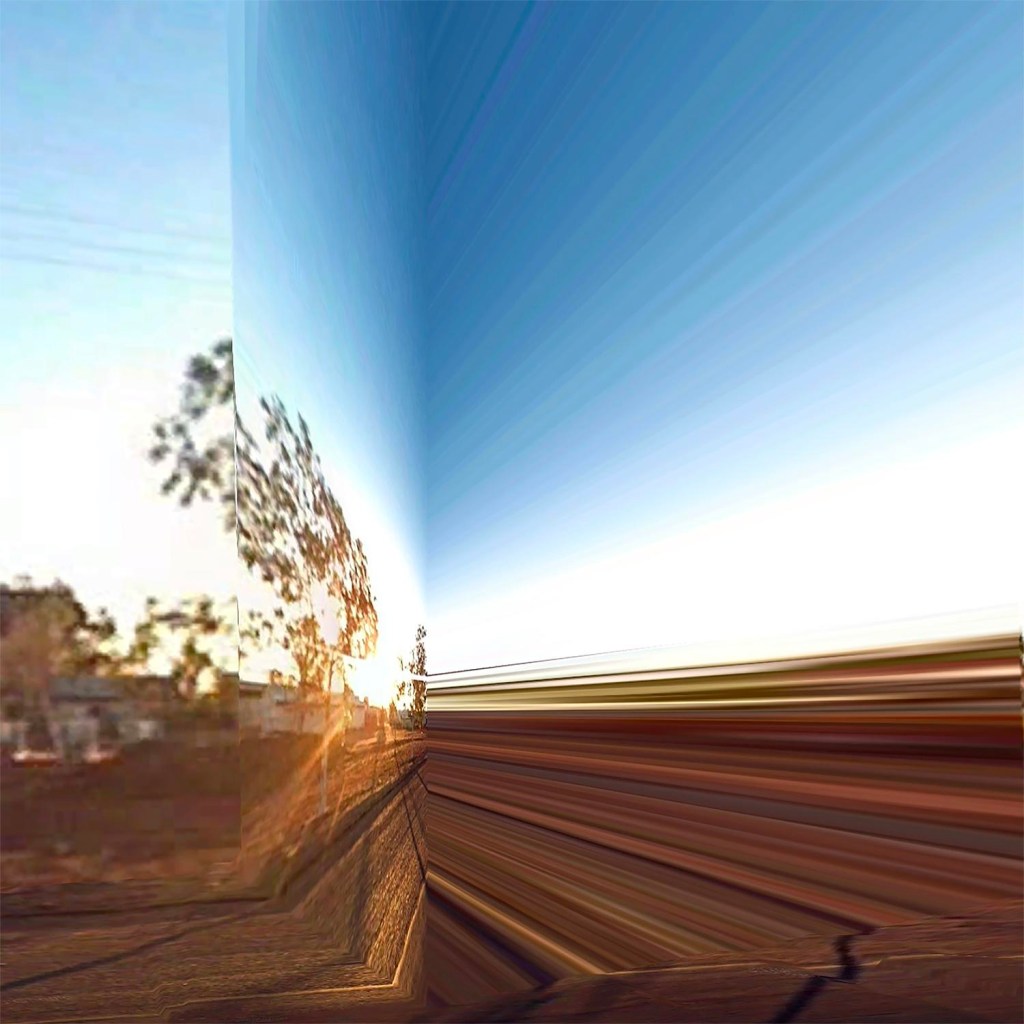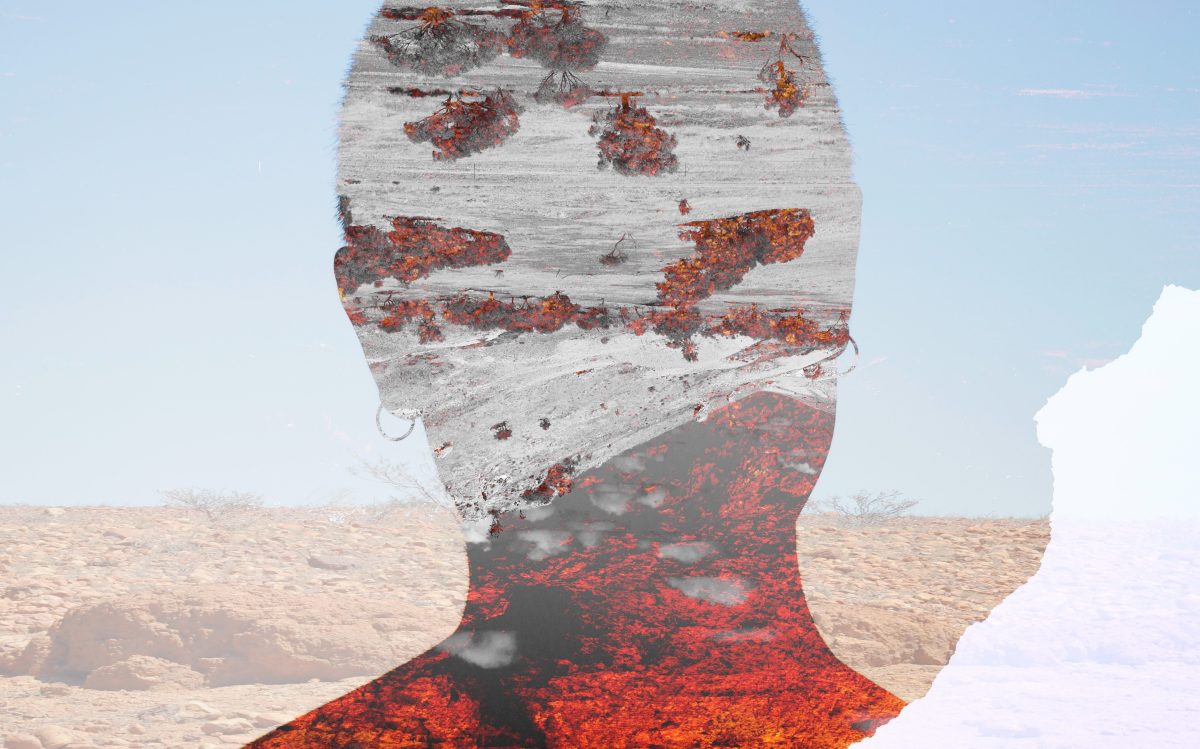The history of Australia is a history founded on settler colonialism and the erasure of First Nations Peoples. The myth of terra nullius continues to erase Indigenous sovereignty and photography has been integral to documenting and strengthening its violent ideologies of genocide, forced assimilation and land dispossession.
In (Dis)connected to Country, Jahkarli Felicitas Romanis grapples with the question of whether photographs can have their own agency. Dissecting the archives alongside oral histories, Romanis interrogates the possibility of self-determination in representations of Country and self, examining photo-making technologies and the biases encoded within them. She calls it a ‘project of revival, healing and mapping back to Pitta Pitta Country’, reflecting on her personal family history, specifically the removal of Romanis’ great-grandmother Dolly in the early 1900s during the Stolen Generations era.
In this article:
Journey into academia
In 2021, Romanis commenced a PhD at Monash University through the Wominjeka Djeembana Indigenous Research Lab and has since intertwined her creative practice as an artist and curator with her academic practice as a researcher. She says, ‘Doing this PhD project is an opportunity to shift and subvert Western academia and Western systems of knowledge from within the very walls [where] they are created, engrained and legitimised. It is an opportunity to disprove the myth that Indigenous Knowledges are not “academic” and that First Nations people cannot exist nor contribute in these spaces.
‘It allows me to use university resources to work with community and to share this project with my family. Learning about my family histories and my people is a gift. As part of my PhD, last year I was able to go to Country with my mum and aunt to reconnect with kin and spend time on Pitta Pitta Country. Being accountable to Country and community is at the core of my PhD. For me, if it is disconnected from these things, it is not worth doing.’
She continues, ‘I owe my journey into academia to all the people who have believed in me and, most importantly, to my family. I would not be doing this if it wasn’t for their unwavering support, resistance and strength. Everything that I am, and everything that I make is for them.
‘In all of my education, I hadn’t had any First Nations teachers until I began studying within the Wominjeka Djeembana Indigenous Research Lab at Monash. To be surrounded by phenomenal First Nations artists and academics is so special and very powerful. It gives me strength to be in institutional spaces, to hold space for myself, and for other First Nations people. I’m incredibly grateful to be part of the Wominjeka Djeembana community.’
Archival resistance
Despite the colonial nature of archives, Romanis believes that they can be used to resist their own colonial mythologising. She explains, ‘Photography can be used to reclaim agency over colonial subjugation by acknowledging its colonial use and using those same images in a way that seeks to be more productive, sharing the narrative that exists beyond that of colonial subjugation.’
For those who have historically been seen as objects rather than subjects, she points out the importance of ‘calling it out for what it is, but also using and working with those same photographs in a way that ties further perspectives and stories into the image, rather than focusing on the colonial narrative that sits behind the photograph’.
She says, ‘My work attempts to submerse [my great-grandmother] Dolly back into Country, while subverting the colonial gaze forced on her by [Norman] Tindale and his team of “researchers”. Acknowledging that while the archive is problematic, it allows Aboriginal people to access information about their families and history. Without Tindale’s work, I wouldn’t know who I am. Although the documentation of my family is incredibly reductive and extractive, the kind of tension I’m dealing with is that a lot of this information has been really important for my family to learn about where we’ve come from.’
When the archive is re-appropriated and utilised as a means for reconnecting and rewriting the narrative on her own sovereign terms, it ceases to be instrumentalised for colonial subjugation alone, instead becoming a way to reconnect with her Ancestors.
Romanis’ art draws from the lived experiences of her family and seeks to decentre the acts of oppression inflicted upon them, focusing on their resilience, strength and survival. She says the project has ‘enabled a sense of curiosity towards my family history and a creative way of working through, expressing and reflecting on a lot of these traumatic truths, but also the resilience of my people and of my family’.
Unlearning colonial knowledges through oral histories
In Western, colonial practices, specifically in institutional settings of knowledge such as universities and libraries, legitimacy is afforded primarily to the written word. Romanis began unpacking this during her residency at the Melbourne Art Library in 2022. She used communal interventions and strategies of questioning and de-accessioning problematic sources of knowledge. She also wrote poems during the residency:
‘I search incessantly for words which are me
…
They are the words written in a language which I know. A language which I also speak, but a language which isn’t mine
…
I search incessantly for glimpses of you.
Proof that we are real.
Proof that I am of you, and you of me.
…
I flick pages so as to learn, but I don’t learn from you. Only about you.’
She explains, ‘Within an educational context, a lot of the books I read about Australian history during high school were from a colonial perspective, written by the coloniser and not the colonised. The voice within them is very skewed and one-sided.’
Her understanding of Pitta Pitta Country is informed by oral histories. She continues, ‘Oral histories are the ways we share knowledge and information, and connect to one another. Yarning is an important cornerstone of communicating and truth-telling, having conversations with family members and building my own kind of context for identity… This project wouldn’t exist without oral histories, and I wouldn’t exist without oral histories. Oral histories have contributed to our survival as Aboriginal people; [they are] how we learn about ourselves and culture.’
Country and self
In (Dis)connected to Country, to be exhibited at Hillvale Gallery in March, Romanis experiments with ‘placing myself (in a photographical sense) back into Country through using layering’.
‘That submersion speaks to my dislocation from Country, but also the dislocation experienced by my family and how I can use photographs as a tool of coming back to Country, being on Country.’
This ongoing body of work explores her identity as a Pitta Pitta woman and her connection to Country, linking her past and present. She explains, ‘It acknowledges the importance of Country to cultural identity, but also the yearning experienced when being away from Country. These are images of an embodied experience – in many ways, my body is an archive.’
Read: Art centres go above and beyond
During her Honours degree, Romanis needed to go to Pitta Pitta Country. However, the onset of the pandemic made this impossible during that time. Instead, she visited Pitta Pitta Country virtually via Google Earth, which sparked her interest in the limits of technology in representing place and the colonial politics of mapping.
In an article for The Conversation, she highlighted that Western maps have biases and are not neutral tools, placing emphasis on their hidden subjective and colonial agenda. Romanis seeks to expose the inherent biases in contemporary digital mapping technologies and where these technologies dysfunction, degrade and break down within themselves.

Resilience and family
Romanis emphasises the importance of ‘not only pointing the finger at colonial myths’ within photographs of Pitta Pitta Country and her family, but also ‘moving beyond that and ingraining and enforcing my own story into those very same images’.
For her, this means ‘acknowledging the link between self and Country and that there are multiple histories and knowledges of Country outside of a colonial understanding of place’.
‘Terra nullius as a myth seeks to erase Indigenous connections to place, but also doesn’t acknowledge that Aboriginal people were here for thousands and thousands of years before colonial occupation.’
When Romanis looks back at the portrait of Dolly, she has an overwhelming ‘feeling of awe around her strength’. She says, ‘I see my mum in her, I see my grandmother in her. I owe this project to her and her life. It’s a testament to the kind of woman that she was and the kind of woman that I am striving to be.’
Photographs can serve as time portals into the past. ‘I often think Dolly communicates with me through her portrait that Tindale made,’ says Romanis. ‘A lot of First Peoples’ understanding of time is not linear, is not forward thinking. The photograph speaks to this in a way because it’s a photograph of Dolly existing in the present from a moment in the past. I interact with her through this photo; she speaks to me from the past.’
Speaking of her practice, Romanis adds, ‘The images and poems I make within my practice do a similar thing. I’m speaking with my Ancestors through my arts practice, but the outcome of making also leaves something for those who come after me.’
She concludes, ‘Ultimately, at the end of it all, my only hope is to be someone that my younger self would have looked up to. I create and work with those who come after me in mind, constantly inspired by those who have come before.’
(Dis)connected to Country will be on view at Hillvale Gallery as part of PHOTO2024, 1-24 March.
This article is published under the Amplify Collective, an initiative supported by The Walkley Foundation and made possible through funding from the Meta Australian News Fund.





